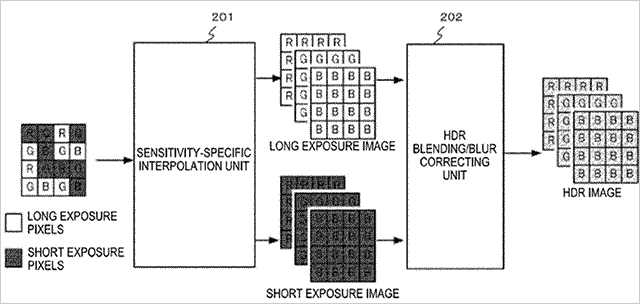A new patent by Sony discloses ground breaking technologies that can control the exposure of the sensor on pixel level, that means your future camera will set variable exposure depending on the darker and brighter part of the scene.
That means the dark part of your night scene will be considered as the area of ‘long exposure pixels’ that will sure need more time compared to the brighter part of the scene having ‘short exposure pixels,’
 But, What happen when a moving car with bright headlights enters into a static scene which is a mixture of shadow and highlights … Sony already have a decent solution for that.. the system comes with a HDR BLUR CORRECTING UNIT that will automatically select the best scene by eliminating the unwanted blur.
But, What happen when a moving car with bright headlights enters into a static scene which is a mixture of shadow and highlights … Sony already have a decent solution for that.. the system comes with a HDR BLUR CORRECTING UNIT that will automatically select the best scene by eliminating the unwanted blur.
via- SARforum









What is great about Sony’s Image Chip is that it can do HDR on the Image Chip itself instead of relying on an external Processor. In addition, the Chip is able to ‘Image Stabilize’ the two HDR Frames to prevent the ‘double pixel’ effect (as show in the HDR Video below).
That Video has an Image Chip with an HDR range of 120 dB (a lot). The only problem is the lower than desired resolution (but not by much) and the ‘double pixel’ effect.
confused. Why not control gain at the pixel level? CMOS already has this setup… Just needs a local feedback loop.
It’s ground breaking nor braking
Thanks for the help….